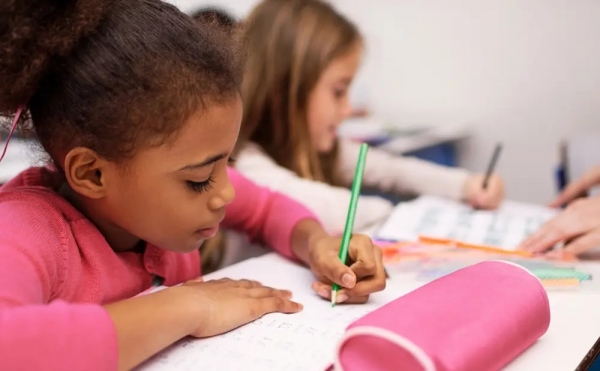My first year in the classroom, I saw one of my more disengaged students pass a note to a friend. I thought about confiscating it, as my teachers had done. Instead, I wrote her my own note the next day. She wrote back, and we continued writing through the year, her engagement in class strengthening alongside our relationship. Letter writing became my most essential tool for earning my students’ trust.
When we as teachers write letters to students and they write back to us, we balance power dynamics, learn from each other, practice holding space for complex feelings, and engage our natural curiosities as readers and writers. Here are several suggestions for writing meaningful letters to students.
INTRODUCING THE LETTERS
To promote authentic communication that equalizes the power dynamic removes obligations and expectations that students participate. Keep the letters optional and clarify that writing conventions and the content will not be evaluated.
Inform families, perhaps in a separate letter, that you are initiating a dialogue with students through optional letter writing. Remind parents and students that you will respect their privacy—but that you are still a mandated reporter.
Keep the lines of communication open and flexible by avoiding constraints like deadlines and page limits. Make it known that students are welcome to start new topics and don’t need to continue a topic initiated by the teacher.
Write the first letter to your students (you might start with a few students per week) to serve as a helpful example for students who may struggle with this possibly unfamiliar form. Set students at ease by using a casual tone, sharing personal anecdotes, and even including jokes or funny sketches. Model letter writing conventions like dating and signing the letter.
WRITING YOUR LETTERS
I used to pepper my letters with questions and suggested topics to prompt students to respond. But this approach maintains the traditional power structures of classroom communication, where the teacher is facilitating conversation. Over time, I learned to create a safe space that promotes genuine dialogue.
Participate in the conversation instead of directing it: If I know a student plays the violin, I won’t directly ask him about it. Instead, I write about my related experiences. For example, with this extra time on my hands, I have thought about finally learning how to play my guitar. I’m thinking of trying YouTube videos, but I’m worried that I won’t have the discipline to practice without a teacher. By sharing these thoughts, I open up lines of communication. My student is free to pick up this thread and respond in a variety of ways, instead of only answering my specific questions about the violin. Maybe he won’t mention his violin at all and instead choose to talk about YouTube, describe what he’s doing with his extra time, or assuage my worries about learning a string instrument.
Ask questions that stem from curiosity about topics that students initiate: Questions that are prompted by what students are choosing to share with us invite us to demonstrate genuine curiosity, offer our unique perspective, and introduce new words and ideas that probe students’ thinking. When we gain insight into our students’ unique funds of knowledge, we see their academic assets. We can use these insights to plan instruction that leverages what students already know.
Make your thinking visible: When young people get a glimpse into the thinking life of someone else, especially someone who thinks in an interesting or productive way, it’s the best kind of education. When a student recommends an app I should download, I’m honest about how I’m trying to cut back on my phone use since I’m getting addicted to the games I already play. I add that I’m trying to dock my phone after 6 p.m. and will let her know how it goes. By observing others’ thinking, our students may learn new coping skills and language to navigate their own experiences.
Encourage all forms of expression, regardless of perceived errors or informality: Zaretta Hammond has said that our students’ errors are information. As students informally write to you to connect and share their lives, avoid directives about how they should write. Simply note their errors and write your response with correct models. Use this information as you plan your instruction, but don’t instruct in your letter.
Hold space for students’ feelings: To maintain an equitable co-writing relationship, refrain from comments that evoke the authority you still have as the teacher. Instead of suggesting solutions to problems that students share, respond with acknowledgment and empathy. Instead of reassuring students with praise, show how you connect with their experience or what you’re learning from them.
When our students have uneven access to distance-learning technology, writing letters allows us to advance equity within our sphere of influence. We can give them a safe space in which to reflect, complain, disagree, express fear, ask hard questions, and hear our stories. We can practice being there for students as a trusted adult, a relationship that can nurture rigorous learning.
Shveta Miller by edutopia.org








